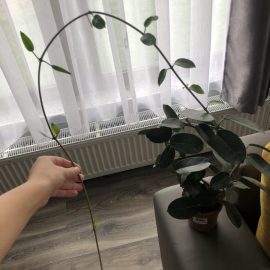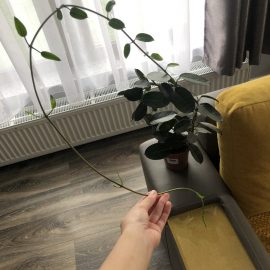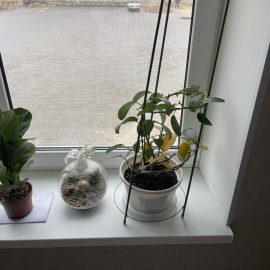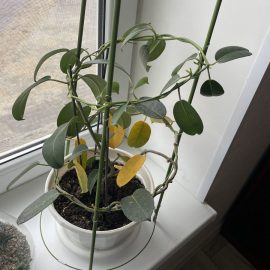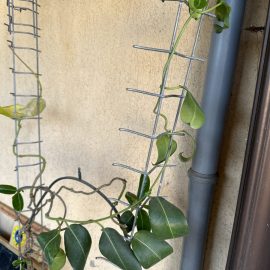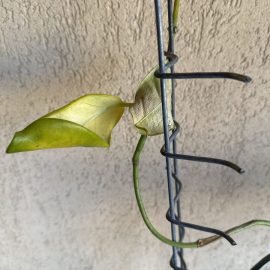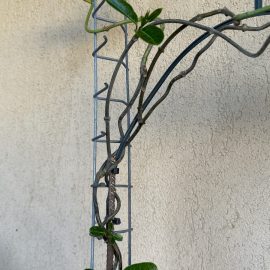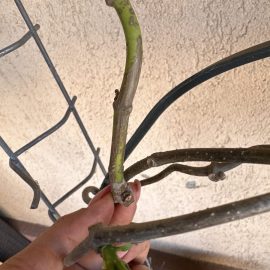Madagascar jasmine, plant care and growing guide
Published on: October 29, 2022 Modified on: 26 April 2024
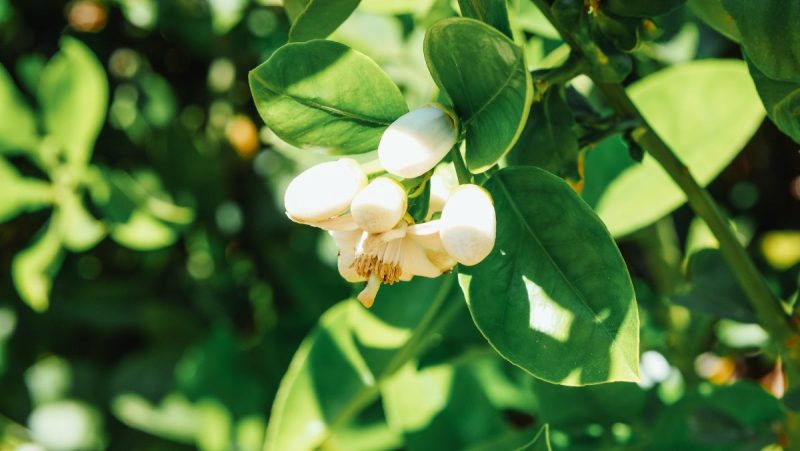
Stephanotis is a genus that belongs to the Asclepiadaceae family, and its name comes from the Greek “stephnanos” which means crown, wreath and “otis” – ear. This genus includes lianas with woody stems and persistent foliage, being appreciated for their white, waxy, fragrant flowers.
Species and cultivars
Stephanotis floribunda or Madagascar jasmine is the best-known species of the genus, its flowers being similar to those of jasmine. However, Stephanotis floribunda is not related to the Jasminum genus, which is part of the Oleaceae family.
The leaves have an obovate shape, are short-petiolate, oppositely arranged and have a bright dark green color, with a prominent median rib , lighter in color.
The stems can reach 3-4 m in length, and the plant requires to be guided on a trellis, which is often done on a wire support that has the shape of a narrower or wider spring, with the ends lodged in the soil in the flowerpot or fixed to the edge of the pot.
The flowers have a tubular corolla, approximately 4 cm long with 5 pointed lobes and are clustered in umbels arranged in the axils of the leaves. Flowering occurs frequently, from January to April-May, sometimes also in summer.
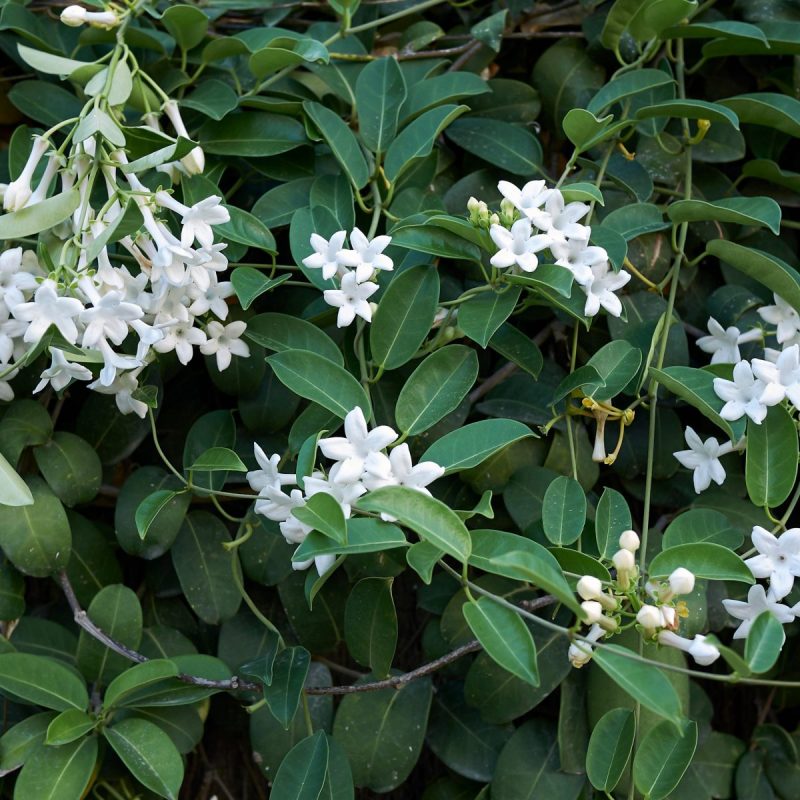
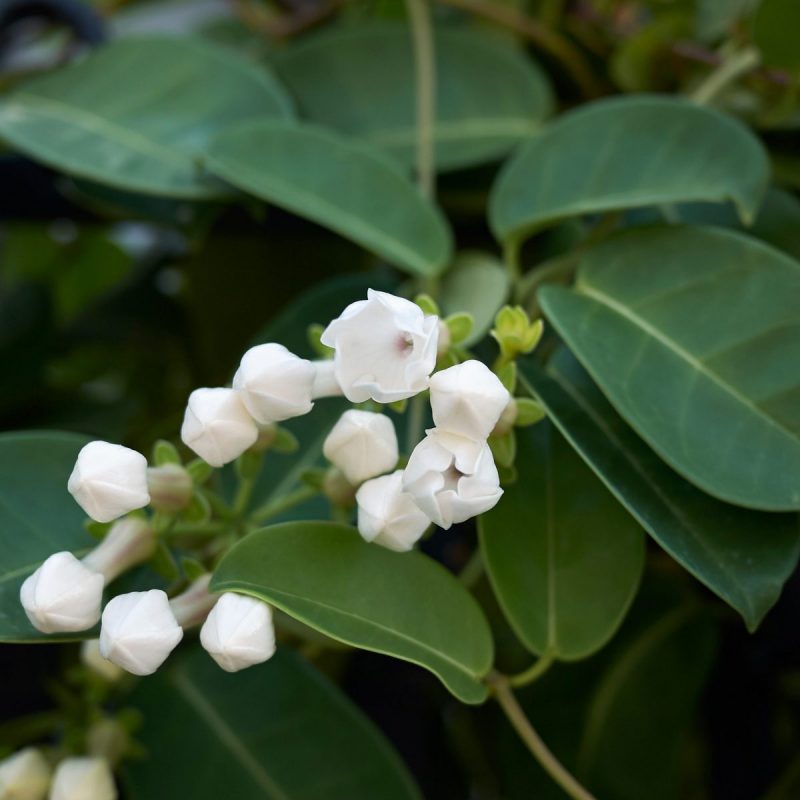
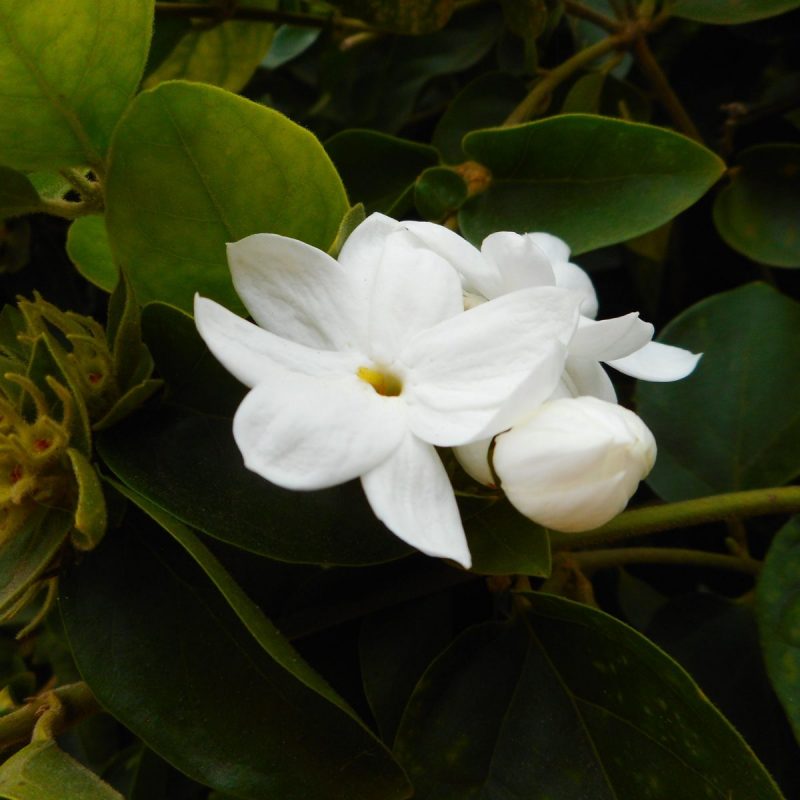
Environmental conditions
Light. It is a species that requires to be placed in bright places, but it is recommended to benefit from filtered light, as direct sunlight can cause burns.
Temperature. During the vegetative growth period, the optimum temperature is between 18-20 °C. In winter, it needs a dormancy period, which is achieved by placing it in well-lit rooms, with a temperature between 8-10 °C, while watering should be done less often.
Substrate. It prefers fertile, light substrates that ensure a good water drainage.
Recommended products
-
You can find products on a different store
Change Store -
You can find products on a different store
Change Store -
You can find products on a different store
Change Store -
You can find products on a different store
Change Store -
You can find products on a different store
Change Store -
You can find products on a different store
Change Store -
You can find products on a different store
Change Store -
You can find products on a different store
Change Store -
You can find products on a different store
Change Store -
You can find products on a different store
Change Store -
You can find products on a different store
Change Store -
You can find products on a different store
Change Store -
You can find products on a different store
Change Store -
You can find products on a different store
Change Store -
You can find products on a different store
Change Store -
You can find products on a different store
Change Store -
You can find products on a different store
Change Store -
You can find products on a different store
Change Store -
You can find products on a different store
Change Store -
You can find products on a different store
Change Store -
You can find products on a different store
Change Store -
You can find products on a different store
Change Store -
You can find products on a different store
Change Store -
You can find products on a different store
Change Store
Care
Watering. During the vegetative growth period, it is necessary that the substrate be kept damp, using moderate volumes of water, and during the winter, it is recommended that it dries slightly before watering again. At the same time, during the vegetative growth period, the atmospheric humidity will be kept higher, by periodically spraying with water.
Fertilizing. To stimulate a healthy growth and abundant flowering, it is recommended to regularly administer fertilizers specially formulated for flowering plants.
Recommended products
-
You can find products on a different store
Change Store -
You can find products on a different store
Change Store -
You can find products on a different store
Change Store -
You can find products on a different store
Change Store -
You can find products on a different store
Change Store -
You can find products on a different store
Change Store -
You can find products on a different store
Change Store -
You can find products on a different store
Change Store -
You can find products on a different store
Change Store -
You can find products on a different store
Change Store -
You can find products on a different store
Change Store -
You can find products on a different store
Change Store -
You can find products on a different store
Change Store -
You can find products on a different store
Change Store -
You can find products on a different store
Change Store -
You can find products on a different store
Change Store -
You can find products on a different store
Change Store -
You can find products on a different store
Change Store -
You can find products on a different store
Change Store -
You can find products on a different store
Change Store -
You can find products on a different store
Change Store -
You can find products on a different store
Change Store -
You can find products on a different store
Change Store -
You can find products on a different store
Change Store
Propagation. It can be done by cuttings (being a more difficult procedure) of 8-10 cm length, harvested at the end of flowering, in summer, or by seeds.
Recommended products
-
You can find products on a different store
Change Store -
You can find products on a different store
Change Store -
You can find products on a different store
Change Store -
You can find products on a different store
Change Store -
You can find products on a different store
Change Store -
You can find products on a different store
Change Store -
You can find products on a different store
Change Store -
You can find products on a different store
Change Store -
You can find products on a different store
Change Store -
You can find products on a different store
Change Store -
You can find products on a different store
Change Store -
You can find products on a different store
Change Store -
You can find products on a different store
Change Store -
You can find products on a different store
Change Store -
You can find products on a different store
Change Store -
You can find products on a different store
Change Store -
You can find products on a different store
Change Store -
You can find products on a different store
Change Store -
You can find products on a different store
Change Store -
You can find products on a different store
Change Store -
You can find products on a different store
Change Store -
You can find products on a different store
Change Store -
You can find products on a different store
Change Store -
You can find products on a different store
Change Store
Transplanting. It is done annually, in the spring.
Diseases and pests
It can be affected by mites, wooly apple aphids or European fruit lecanium, against which treatments are carried out with specific insecticides, depending on the pest present. At the same time, Madagascar jasmine is prone to root rot, if there is a constant high humidity at the substrate level.
Additionally:
- It is a species that tolerates pruning well;
- It does not tolerate excessive moisture at the root level;
- In spring, the stems that are too long are shortened;
- The flowers are frequently used in floral arrangements.














































































































































































































































































































































































































































